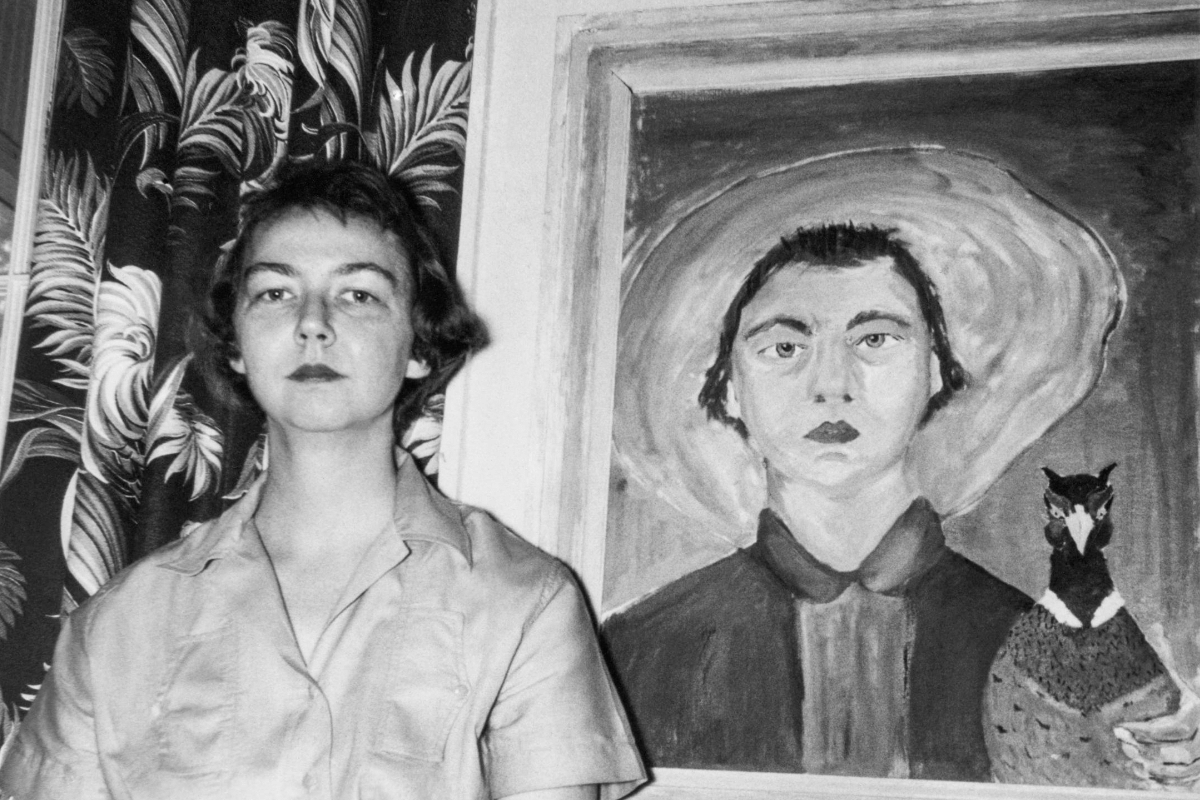
She asked them why they called each other Temple One and Temple Two and this sent them off into gales of giggles. Finally they managed to explain. Sister Perpetua, the oldest nun at the Sisters of Mercy in Mayville, had given them a lecture on what to do if a young man should – here they laughed so hard they were not able to go on without going back to the beginning – on what to do if a young man should – they put their heads in their laps – on what to do if – they finally managed to shout it out – if he should “behave in an ungentlemanly manner with them in the back of an automobile.” Sister Perpetua said they were to say, “Stop sir! I am a Temple of the Holy Ghost!” and that would put an end to it. The child sat up off the floor with a blank face. She didn’t see anything so funny in this. What was really funny was the idea of Mr. Cheatam or Alonzo Myers beauing them around. That killed her. (p. 199)
She would have to be a saint because that was the occupation that included everything you could know; and yet she knew she would never be a saint. She did not steal or murder but she was a born liar and slothful and she sassed her mother and was deliberately ugly to almost everybody. She was eaten up also with the sin of Pride, the worst one. She made fun of the Baptist preacher who came to the school at commencement to give the devotional. She would pull down her mouth and hold her forehead as if she were in agony and groan, “Fawther, we thank Thee,” exactly the way he did and she had been told many times not to do it. She could never be a saint, but she thought she could be a martyr if they killed her quick. (p. 204)
Here the child’s true character is laid bare. Behind pride’s cloak lurks a sense of insecurity, that she is ultimately small and mean and perhaps insignificant when the sums of her life are totaled. Yet she is not without hope. When the twins return around midnight, talking almost breathlessly about the “freak” they saw (a hermaphrodite) going across a curtained divide from a male audience to a female one, showing her body and proclaiming:“God made me thisaway and if you laugh He may strike you the same way. This is the way He wanted me to be and I ain’t disputing His way. I’m showing you because I got to make the best of it. I expect you to act like ladies and gentlemen. I never done it to myself nor had a thing to do with it but I’m making the best of it. I don’t dispute hit.” (p. 206)the girl is affected by this and she imagines a dialogue between the “freak” and the people that would encapsulate the body, no matter its form, being “a temple of the Holy Ghost.” This thought lingers with the child the next day, as she, her mother, and the twins drive to the convent of Mount St. Scholastica. As they arrive at the convent and the nuns hurry them in, as the benediction was beginning, the child is struck by the mystery of the Mass and how it tied into her worried thoughts:
The child knelt down between her mother and the nun and they were went into the “Tantum Ergo” before her ugly thoughts stopped and she began to realize that she was in the presence of God. Hep me not to be so mean, she began mechanically. Hep me not to give her so much sass. Hep me not to talk like I do. Her mind began to get quiet and then empty but when the priest raised the monstrance with the Host shining ivory-colored in the center of it, she was thinking of the tent at the fair that had the freak in it. The freak was saying, “I don’t dispute hit. This is the way He wanted me to be.” (pp. 208-209)If in the other stories grace is not truly found (even though desired by several of the characters, particularly the young boy in “The River”), here at the end of “A Temple of the Holy Ghost,” when the child looks out the car window at the end and sees that the sun “was a huge red ball like an elevated Host drenched in blood and when it sank out of sight, it left a line in the sky like a red clay road hanging over the trees” (p. 209), there is the sense that this character at least might indeed find some semblance of redemption. Doubtless this is intentional, that in contrast to the various Protestants and former believers in her tales who seek (and fail) to find forgiveness or redemption in their actions, here in the mystery of the Mass and in the use of the “freak” to underscore just how “freakish” unredeemed humanity is that O’Connor closes a tale not with a smirk or a sad sigh but with a glimmer of hope. While doubtless some readers may find the religious symbolism to be off-putting, their use in “A Temple of the Holy Ghost” is effective and poignant. It may be one of her best-executed tales because it encapsulates much of her own self within these pages, not to mention that the juvenile protagonist perhaps reminds us more clearly of our own foibles and desires to reform.